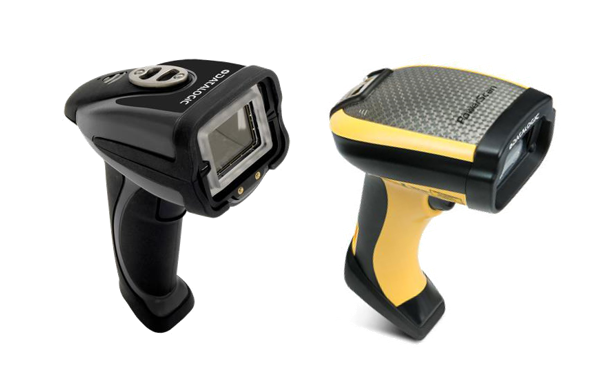Direct Part Marking (DPM) Explained
 While most barcodes you come across are printed on a label or paper-packaging of a product, in the manufacturing world and work-in-process applications many parts or components need to be marked with a barcode directly. Direct Part Marking is a process that allows  users to mark a barcode directly on an item instead of printing the barcode on a label.
While most barcodes you come across are printed on a label or paper-packaging of a product, in the manufacturing world and work-in-process applications many parts or components need to be marked with a barcode directly. Direct Part Marking is a process that allows  users to mark a barcode directly on an item instead of printing the barcode on a label.
There are 3 main technologies available for DPM:  laser or chemical etching, dot peening  and ink jet printing. Each of these has specific  advantages  and disadvantages  in terms  of durability, cost and ease of reading.  The main advantages  of codes with  DPM technology are that  the code is permanently marked  on a surface and will  survive  for a long  time  (ideally  forever), regardless  of the  stress the part is passing  through during its’ life cycle. The main  reasons to choose codes with  DPM technology are:
- Items that need to pass through harsh testing processes  (chemicals  agents, thermal cycles, oil, moisture, etc.)
- Items that need to  be tracked  during  their  entire life cycle
- Very small items (difficult to label)
DPM technology was first  adopted  mainly  by the automotive and general mechanical industries. Currently, the popularity of codes using  DPM technology has spread into  different sectors  including electronics, chemicals  and healthcare  industries.
Code Introduces the New CR6000 Industrial DPM Scanner

Code has announced the release of the Code Reader 6000 (CR6000), an industrial grade direct part mark (DPM) reader that enhances data collection with the latest advancements in barcode reading.
The CR6000 employs Code’s latest imaging technology to achieve consistent first pass read rates of dot peen and laser-etched barcodes, regardless of surface type. Combining advanced illumination control and patented anti-glare technology with a propriety decoding platform, the CR6000 excels in reading low-contrast, hard-to-read barcodes, even those that are damaged by every day wear and tear.
Microscan’s All-In-One Solutions for Inline or Offline Barcode Quality Verification
Microscan’s new barcode verification kits bundle complete tools for ensuring the readability and compliance of printed 1D/2D symbols or direct part marks. Engineered to meet ISO and AIM quality standards and designed with the ideal lens and lighting configurations, each kit includes a Vision HAWK smart camera, NERLITE Smart Series industrial lighting, and AutoVISION machine vision software in the most convenient, all-in-one packages for inline or offline verification.
- Three kits for common verification needs:
- Large Linear Verification Kit
- 1D/2D Label Verification Kit
- Dot Peen Verification Kit
- Verify to ISO 15415, ISO 15416, AIM DPM
- Includes compliant camera, lens, lighting, mounting hardware, and software
- Inline or offline verification
For more details on any of the verification kits or help finding the best Microscan solution for your needs, contact us at Barcodes Inc.
Introducing Datalogic’s Powerscan DPM Imagers – PD9530-DPM and PD8590-DPM
 Datalogic has introduced a new family of handheld area imagers specifically designed for applications based on codes printed with Direct Part Marking (DPM) technology. This new PowerScan family is a blend of the Datalogic experience with optical systems, hardware architecture, mechanical design and decoding software. Two different models are available allowing the customers to choose the best price/performance combination for their specific needs.
Datalogic has introduced a new family of handheld area imagers specifically designed for applications based on codes printed with Direct Part Marking (DPM) technology. This new PowerScan family is a blend of the Datalogic experience with optical systems, hardware architecture, mechanical design and decoding software. Two different models are available allowing the customers to choose the best price/performance combination for their specific needs.
The PD9530-DPM imager has a standard illumination system and bases its reading capability on the decoding software. This imager offers great performance on a wide set of bar code types, but does not cover all DPM situations.
The PD8590-DPM imager is a highly specialized scanner with a multi-axis illumination system specifically designed for reading DPM technology. The reading performance relies on the combination of the decoding software and the illumination system. This imager can read all types of bar codes printed with DPM technology regardless of the type of surface involved.
Aim. trigger. decode: it’s that simple!




